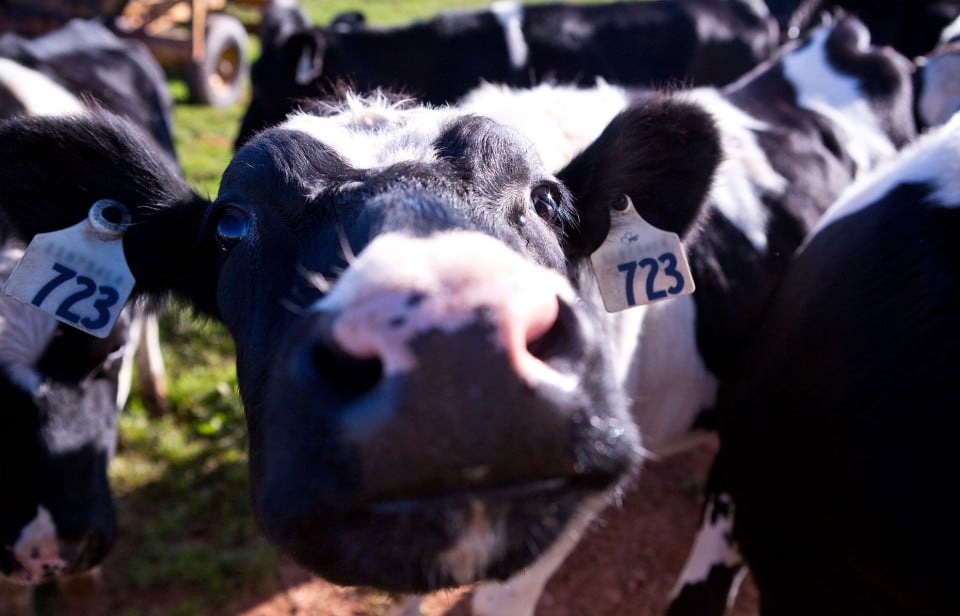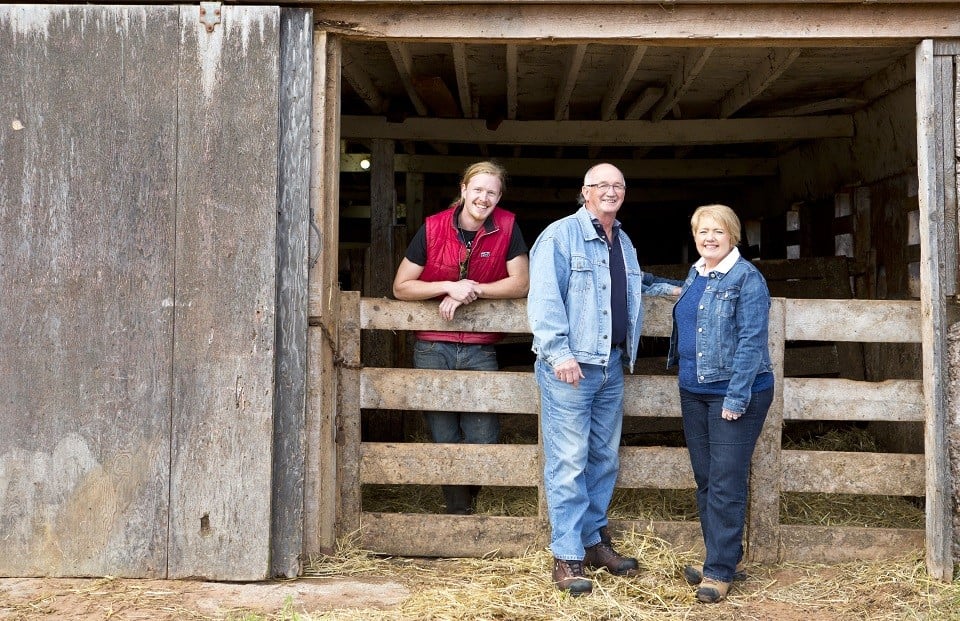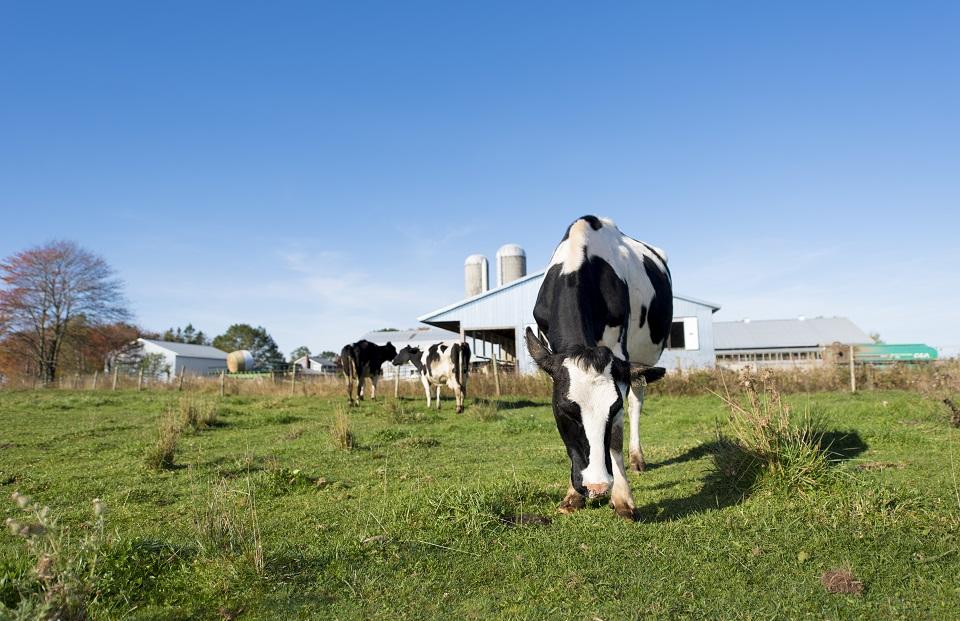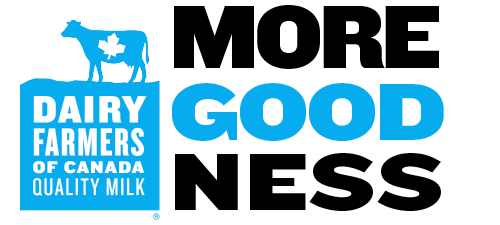Highlights
- Canadian cows produce about three times more milk than 50 years ago, due to improvements in comfort, herd management and feed efficiency
- Dairy production represents about 1% of Canada’s total GHG emissions
- Reducing our dairy farms' environmental impact is an ongoing effort
Caring about the environment means caring for our future. And since dairy farms are often family businesses that get passed down over generations, we have great reason to care. We welcome innovation to continue improving efficiencies to be more sustainable. To t his end, we invest in new technology and conservation agriculture practices that improve soil health (nutrients and minerals are essential to grow lots of nutritious crops), recycle water, reduce waste and produce green energy.
In our ongoing journey, we feel it’s important to recognize the areas where we can continue to improve. A Life Cycle Assessment (LCA) is a diagnostic tool we use to routinely assess our environmental profile.
In Canada, the Greenhouse Gas Emissions (GHG) generated per unit of milk produced on farms are among the lowest in the world! Read on to see five steps we’re taking to reduce our environmental impact.

Today’s cows are greener than their grandmothers
Canadian cows produce three times more milk than 50 years ago, thanks to improvements in comfort, herd management and feed efficiency. A comfortable, well-fed, relaxed cow makes more milk. We may be biased in thinking that our cows are the cream of the crop so to speak, but it is cool to know that increased cow productivity actually reduces the GHG emissions of a litre of milk. Cows produce methane during rumination (the digestion process that allows them to eat grass), and storing their manure (a must when the grounds are frozen) also emits methane and nitrous oxide. So, the fewer cows we have on our farms and the more productive they are, the lower the environmental impact.

Improved water conservation
Dairy farming requires clean water, and farmers test water quality regularly. Cows drink about a bathtub of well water a day, and water is needed to clean the equipment, but that volume is dwarfed by the amount of water needed to grow grass and other crops. Even so, overall dairy farming generally help protect fresh water resources. One litre of Canadian milk is produced using less water than in many places around the globe, mainly thanks to our climate and regular rainfalls – a gift from the sky. When there is a drought, the water needed for crops will come from irrigation and increase the water footprint.

Reducing greenhouse gas emissions
Dairy production represents less about 1% of Canada’s total GHG emissions. Canadian cows are among the most productive, and productivity has been a key factor in helping to reduce methane emissions associated with the production of a litre of milk.
Farmers are innovating too as they learn from scientific studies and use new technology. Practices that reduce emissions include emptying manure storage at least twice a year to enrich the soil nutrient content in fields, doing crop rotations, reducing soil disruption of tilling, using ‘precision agriculture’ technology, as well as optimizing milk transportation. The type of manure storage and application on fields can impact the carbon footprint of the farm. All these expert recommendations have contributed to improving the footprint of milk over the years.

Responsible use of fertilizer and pesticides
Dairy farmers use cow manure first and foremost to enrich the soil. However, extra fertilizer may be needed to amend the soil and ensure it has all the nutrient and minerals the growing crops need. Similarly, pesticides may be needed to fight an infestation of bugs or microbes that would destroy crops. In such cases, several precautions are taken to ensure pesticides are properly stored at the farm to avoid exposing humans and animals to them. Furthermore, over 90% of dairy farmers have been trained and passed an exam on the responsible use of pesticides in their fields. A good practice to manage pests without added costly pesticides include crop rotation and the use of cover crops.
Green energy, recycling and technology
Some dairy farms have a biodigester to transform the methane produced from manure into green energy or electricity. Talk about turning a messy situation into a bright idea! Several farms have also used the space they have to install windmills or solar panels to create green energy. Additionally, many dairy farmers in Canada have worked with agrologists or other experts to create an approved nutrient management plan to use nutrients efficiently and minimize the risk of ground water contamination.
Reducing one’s impact on the environment and optimizing the use of natural resources while living in harmony with nature is an ongoing process. Exciting new technological and scientific advances like the use of georeferencing and aerial imagery in fields mean more precision for fertilizer use. In the barn, better ventilation, comfort, automation of tasks and data-collection and analysis enable farmers to farm more efficiently and precisely, gradually increasing output while decreasing costs, time, waste, resources and our carbon footprint.
Sources
Groupe AGÉCO (2024). Environmental Life Cycle Assessment of Canadian Milk. (Report prepared for Dairy Farmers of Canada)
ProAction. "Targets and Achievements: Environment." dairyfarmers.ca
https://www.dairyfarmers.ca/proaction/targets-achievements/environment
Dairy Farmers of Canada. "Water Use on Canadian Dairy Farms." dairyresearch.ca
https://www.dairyresearch.ca/pdf/Fact%20Sheet_Water%20Use%20on%20Canadian%20Dairy%20Farms.pdf
Government of Canada: Agriculture and Agri-Food Canada. "Nutrient management planning." agr.gc.ca
http://www.agr.gc.ca/eng/science-and-innovation/agricultural-practices/soil-and-land/soil-nutrients/nutrient-management-planning/?id=1187355760327





